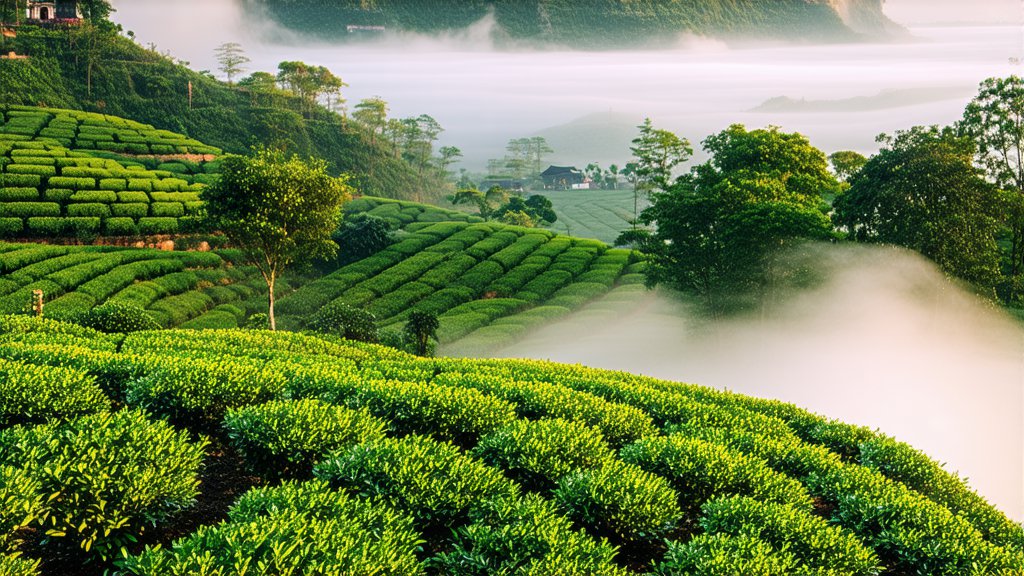
Ti Kuan Yin, a name that resonates with both history and elegance, stands as one of the most revered varieties within the vast spectrum of Chinese Oolong teas. Originating from the Anxi county in Fujian Province, this exquisite tea has captivated tea enthusiasts worldwide with its unique flavor profile and rich cultural heritage. In this exploration, we delve into the historical roots, varietal distinctions, meticulous craftsmanship, and the intricate art of appreciating Ti Kuan Yin, offering an immersive journey into the world of this extraordinary tea.
Historical Roots
The tale of Ti Kuan Yin begins in the early Qing Dynasty, around the 18th century. Legend has it that the tea was discovered by Wei Yin, a poor scholar who found refuge in a temple after failing his imperial examinations. It is said that he stumbled upon a wild tea plant, whose leaves he used to make a brew that revitalized him. He then propagated these plants, naming the tea after himself – 'Tien Kuan Yin', which translates to 'Iron Goddess of Mercy' or 'Iron Guanyin', symbolizing the compassionate nature of Guanyin, the Goddess of Mercy in Buddhism. Over time, this narrative intertwined with the tea's reputation for promoting health and longevity, cementing its status as a treasure among teas.
Varietal Distinctions
Ti Kuan Yin belongs to the broader family of Oolong teas, known for their semi-oxidized state that bridges the gap between green and black teas. What sets Ti Kuan Yin apart are its distinct characteristics shaped by specific growing conditions and cultivation practices. The tea bushes thrive in the mountainous regions of Anxi, where the cool climate, abundant rainfall, and fertile soil contribute to the development of its unique aroma and taste. There are two primary sub-varieties: the traditional Anxi Ti Kuan Yin and the more modern Jin Xuan (Golden Osmanthus) Ti Kuan Yin. While both share the signature floral fragrance and smooth texture, Jin Xuan introduces a subtle hint of osmanthus, adding complexity to its profile.
Meticulous Craftsmanship
The creation of Ti Kuan Yin is a testament to the artistry and precision involved in tea making. The process starts with handpicking only the youngest leaves and buds during the spring harvest when they are at their most tender and flavorful. These leaves undergo a series of meticulous steps: withering under the sun or indoors to reduce moisture content, oxidation control through tossing and turning to achieve the desired level of oxidation, fixation by roasting to halt oxidation and develop flavor, rolling to shape the leaves and release more aroma, and finally drying to ensure proper storage and preservation. Each step requires careful attention to detail and years of experience to perfect.
The Gongfu Tea Ceremony
To truly appreciate Ti Kuan Yin, one must engage in the Gongfu tea ceremony, a ritualistic preparation method that elevates the act of drinking tea into an art form. This ceremony emphasizes the use of small Yixing clay teapots and cups to enhance the aroma and concentrate the flavors. The process involves rinsing the leaves briefly to awaken them, followed by multiple short steepings, each revealing different layers of flavor and aroma. As the water temperature is crucial, it is typically kept between 90-95°C to extract the best qualities without scalding the delicate leaves. Observing the unfurling leaves, savoring the nuanced flavors, and inhaling the evolving scents throughout the session offer a sensory journey that celebrates the essence of Ti Kuan Yin.
Conclusion
In conclusion, Ti Kuan Yin Oolong tea embodies not just a beverage but a profound cultural legacy and a testament to human ingenuity in harnessing nature's gifts. From its mythical origins to its refined production techniques and the meditative practice of the Gongfu tea ceremony, every aspect of Ti Kuan Yin invites us to slow down, appreciate the present moment, and indulge in a timeless tradition that transcends borders and generations. Whether you are a seasoned connoisseur or a curious newcomer, Ti Kuan Yin promises an unforgettable encounter with the soul of Chinese tea culture.